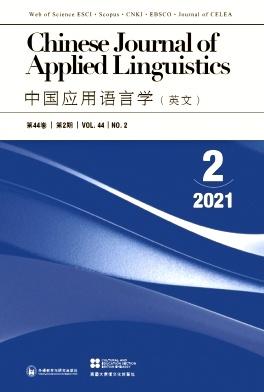Orthographic, Semantic, and Contextual Influences on Initial Processing and Learning of Novel Words During Reading: Evidence From Eye Movements
IF 1.1
4区 教育学
Q3 EDUCATION & EDUCATIONAL RESEARCH
引用次数: 1
Abstract
Abstract This study investigates how orthographic, semantic and contextual variables—including word length, concreteness, and contextual support—impact on the processing and learning of new words in a second language (L2) when first encountered during reading. Students learning English as a foreign language (EFL) were recruited to read sentences for comprehension, embedded with unfamiliar L2 words that occurred once. Immediately after this, they received a form recognition test, a meaning recall test, and a meaning recognition test. Eye-movement data showed significant effects of word length on both early and late processing of novel words, along with effects of concreteness only on late-processing eye-tracking measures. Informative contexts were read slower than neutral contexts, yet contextual support did not show any direct influence on the processing of novel words. Interestingly, initial learning of abstract words was better than concrete words in terms of form and meaning recognition. Attentional processing of novel L2 words, operationalized by total reading time, positively predicted L2 learners’ recognition of new orthographic forms. Taken together, these results suggest: 1) orthographic, semantic and contextual factors play distinct roles for initial processing and learning of novel words; 2) online processing of novel words contributes to L2 learners’ initial knowledge of unfamiliar lexical items acquired from reading.阅读过程中对新词初始加工和学习的直接、语义和语境影响——来自眼动的证据
摘要本研究调查了拼写、语义和上下文变量——包括单词长度、具体性和上下文支持——如何影响第二语言(L2)中第一次在阅读中遇到的新词的处理和学习。学习英语作为外语(EFL)的学生被招募来阅读句子以进行理解,其中嵌入了曾经出现过的不熟悉的第二语言单词。紧接着,他们接受了形式识别测试、意义回忆测试和意义识别测试。眼动数据显示,单词长度对小说单词的早期和后期处理都有显著影响,而具体性只对后期处理的眼动测量有影响。信息性语境的阅读速度慢于中性语境,但语境支持对小说词的处理没有任何直接影响。有趣的是,在形式和意义识别方面,抽象单词的初始学习要好于具体单词。通过总阅读时间来操作新的二语单词的注意处理,可以积极预测二语学习者对新的拼写形式的识别。总之,这些结果表明:1)正字法、语义和语境因素对小说词的初始加工和学习起着不同的作用;2) 小说单词的在线处理有助于二语学习者对阅读中获得的不熟悉词汇的初步了解。
本文章由计算机程序翻译,如有差异,请以英文原文为准。
求助全文
约1分钟内获得全文
求助全文
来源期刊

Chinese Journal of Applied Linguistics
EDUCATION & EDUCATIONAL RESEARCH-
CiteScore
1.50
自引率
0.00%
发文量
377
期刊介绍:
The Chinese Journal of Applied Linguistics (CJAL) (formerly known as Teaching English in China – CELEA Journal) was created in 1978 as a newsletter by the British Council, Beijing. It is the affiliated journal of the China English Language Education Association (founded in 1981 and now the Chinese affiliate of AILA [International Association of Applied Linguistics]). The Chinese Journal of Applied Linguistics is the only English language teaching (ELT) journal in China that is published in English, serving as a window to Chinese reform on ELT for professionals in China and around the world. The journal is internationally focused, fully refereed, and its articles address a wide variety of topics in Chinese applied linguistics which include – but also reach beyond – the topics of language education and second language acquisition.
 求助内容:
求助内容: 应助结果提醒方式:
应助结果提醒方式:


